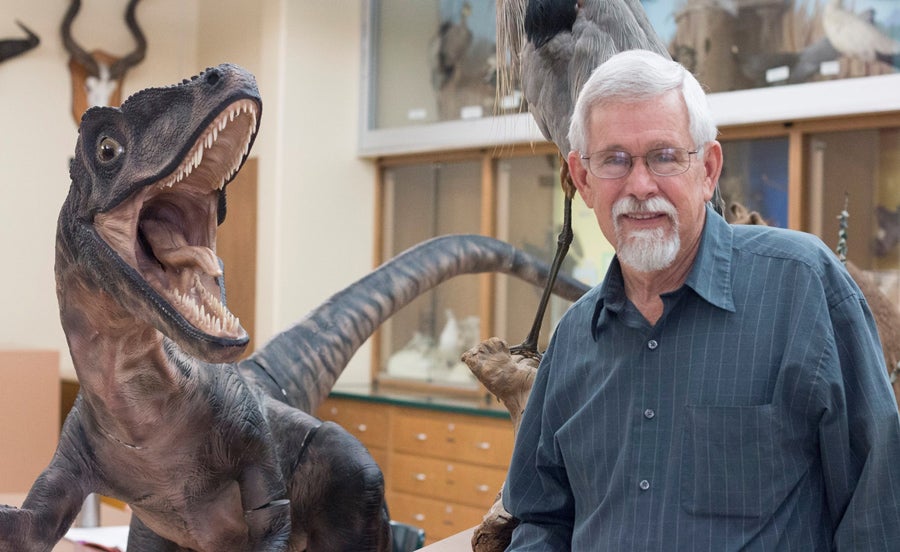Dick Hilton: Paleontology Professor Added Prehistoric Fossils to Sierra College Museum Collection

Dick Hilton came to Sierra College, as professor of Biology and Paleontology, in 1981. He has done much assist the Natural History Museum into what it is today. But he is also proud of the extensive field programs available to the students and community.
“Sierra has an extensive field program. Almost every weekend there are biology field trips, geology field trips, or geography or photography. My expertise is in field vertebrate paleontology, so I put trips together.”
Last summer they went to Wyoming under a BLM government permit. There they collected 50 million year old vertebrate fossils. One such find is the giant turtle that is on display within the Natural History Museum.
Some of the field trips take them as far away as Montana where they look for dinosaurs. “We’ve been going out to the Hell Creek beds of Montana, it’s called that for a reason. There is a place there called Bug Creek, and there is a reason for that. It’s a badlands area that’s very beautiful, but very harsh. We found a T-Rex, Triceratops, baby Triceratops and the skull of a Pachycephalosaurus. We have been quite lucky in our Montana efforts.”
He came upon his interest in dinosaurs completely by accident. He was searching for ammonites in Northern California when he came upon a set of bones. He remembers thinking, “Well, it’s probably a turtle or some sea-going reptile.” Years later a friend of his volunteered to help prepare the land they were excavating when they realized the bones were land running animals—dinosaurs.
It was the first dinosaur from the far North State, north of the Bay Area.
Dick Hilton, biology and paleontology instructor
Some of the fossils that have been found in their field experiences are more local. Dick recalls one of them from Red Bluff, California. “We were keyed in by a local fossil hunter that something was sticking out of a railroad bed up there. We called the railroad, got the paperwork and got permission to dig in the cut of the railroad. What we were looking at was a tortoise.”
“While we were doing that, one of our team members went up to the next cut and found another tortoise which turned out the be the size of a Galapagos Tortoise. It’s a huge tortoise that would be big enough you could get inside. While excavating the tortoise, we found a prehistoric short-faced bear. We then found parts of a large cat, camel bones, and horse bones. It was a treasure trove of animal bones that have probably washed into this one area.”
They also have found fossils where contractors were excavating building sites, such as the Arco Arena and near Berkeley. “The workmen took the bones to UC Davis who said, ‘we don’t do that.’” So they sent them to Sacramento State who said, ‘We don’t do that.’ So they sent them over to us. Well we washed them, dried them and started gluing them together. It actually ended up as two sets of bones. A camel heel and a tibia of a giant ground sloth.”
Dick Hilton is very proud of the accomplishments of Sierra College and looks forward to future field projects.
